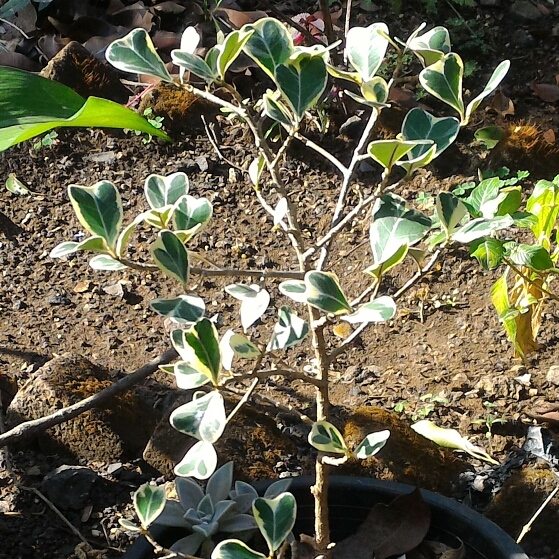
Ficus natalensis subsp. leprieurii
Ficus Triangularis Variegata
The Dwarf Triangle Fig is a variegated plant with triangular leaves. New growth is golden yellow with shades of dark green and gray green centers - maturing to cream with light and dark green centers. A compact dwarf habit and prefers bright indirect light, temps above 55 °F, let dry between waterings.
Contributed by @drumadixit
-
Partial shade to deep shade
-
Very little water
-
Not Frost hardy
-
Light and free draining
Common name
Ficus Triangularis Variegata
Latin name
Ficus natalensis subsp. leprieurii
type
Evergreens
family
Moraceae
ph
5.0 - 7.0 Acid - Neutral
Plant & bloom calendar
-
Best time to plant
full grown dimensions
 1.50 M
2.60 M
1.50 M
2.60 M
Ficus natalensis subsp. leprieurii
The Dwarf Triangle Fig is a variegated plant with triangular leaves. New growth is golden yellow with shades of dark green and gray green centers - maturing to cream with light and dark green centers. A compact dwarf habit and prefers bright indirect light, temps above 55 °F, let dry between waterings.
Planting young plants
From Early Winter TO Late Winter
The various species of ficus require different winter temperatures but they all grow in 4-12 inch pots, according to size, containing potting compost number 2 or a proprietary peat compost. For Benjamina, in winter, provide a temperature of 16 -18C.
Propogation by cuttings
From Early Spring TO Early Summer
Increase by cuttings or air layering. Take 2-4 inches of lateral shoots from early spring to early summer insert in equal parts peat and sand and place in a propogating frame with a temperature of 16-18C. When rooted pot into 3 inch pots of the growing compost.










